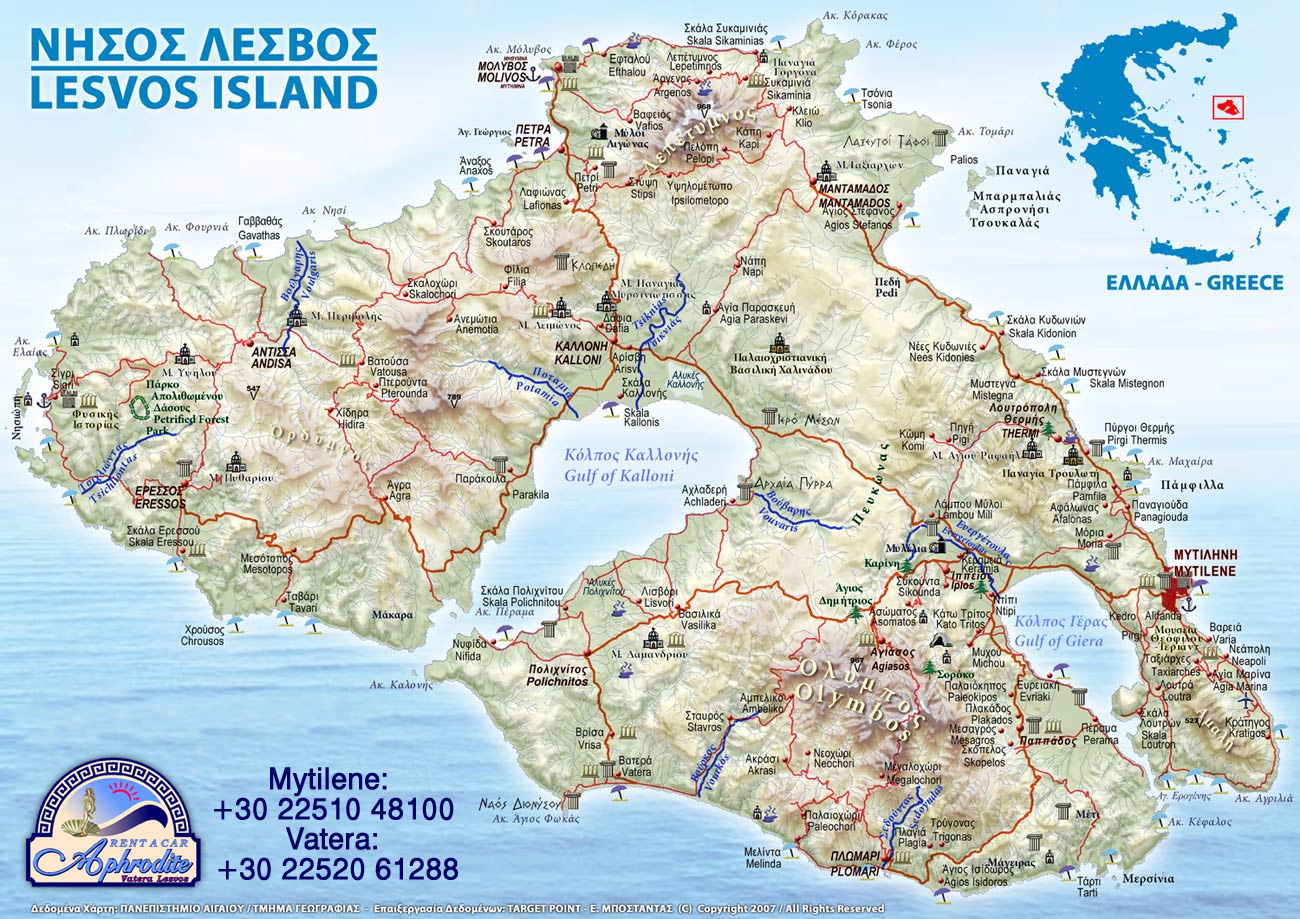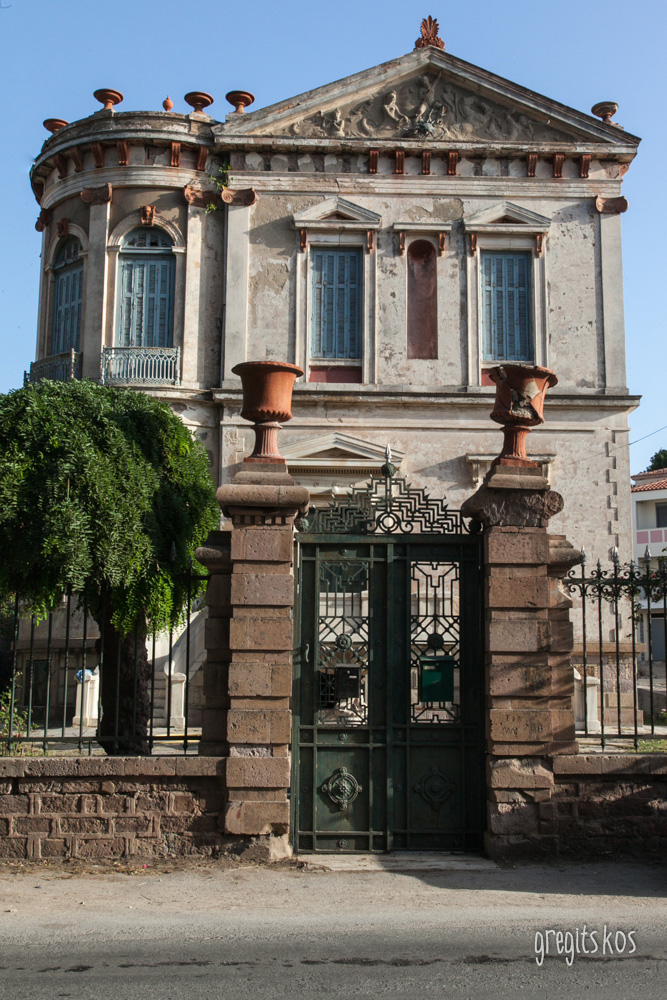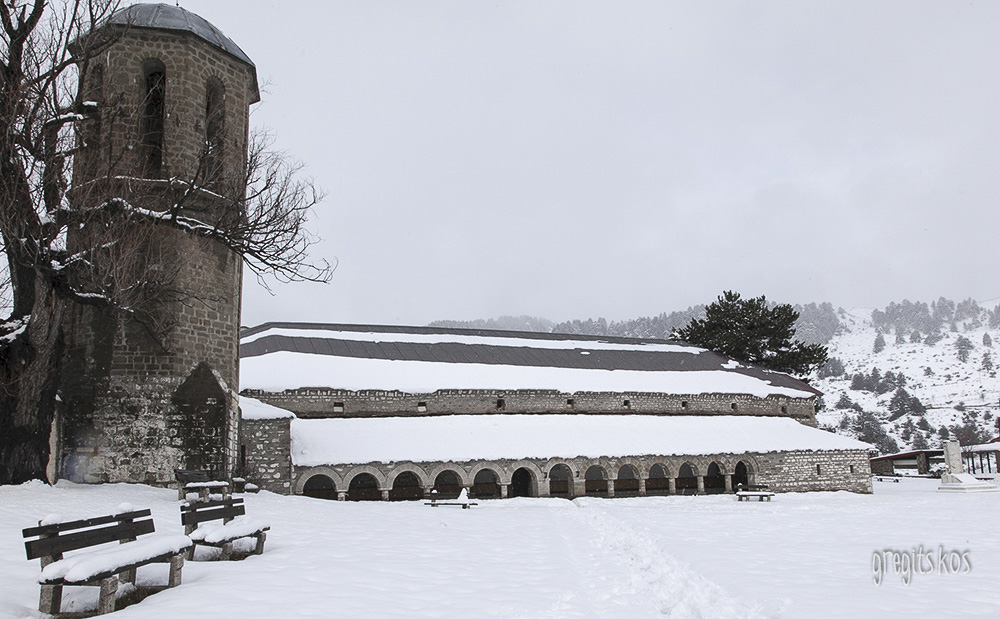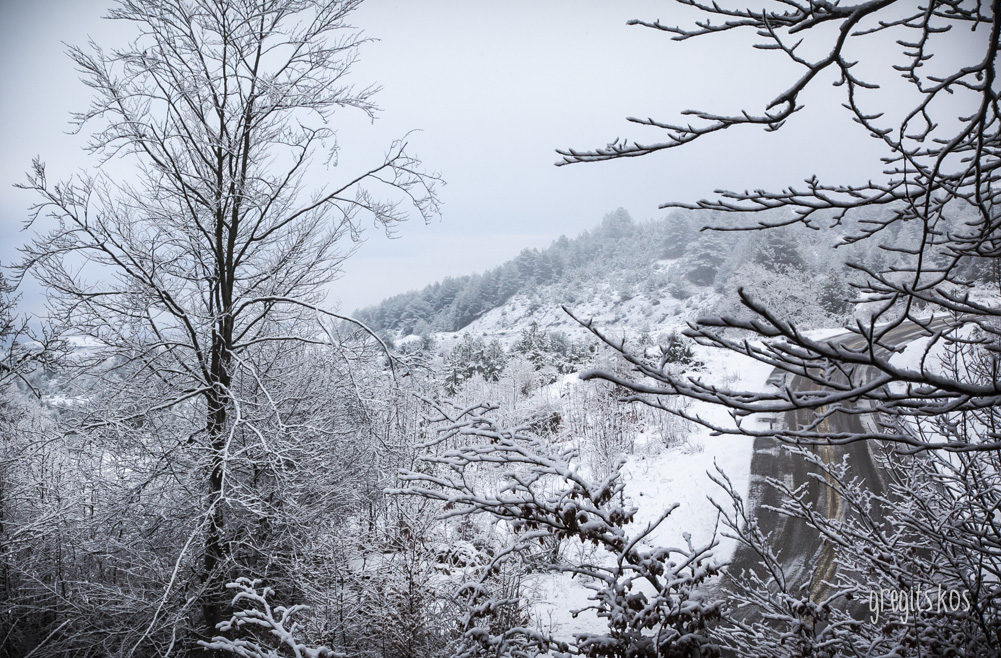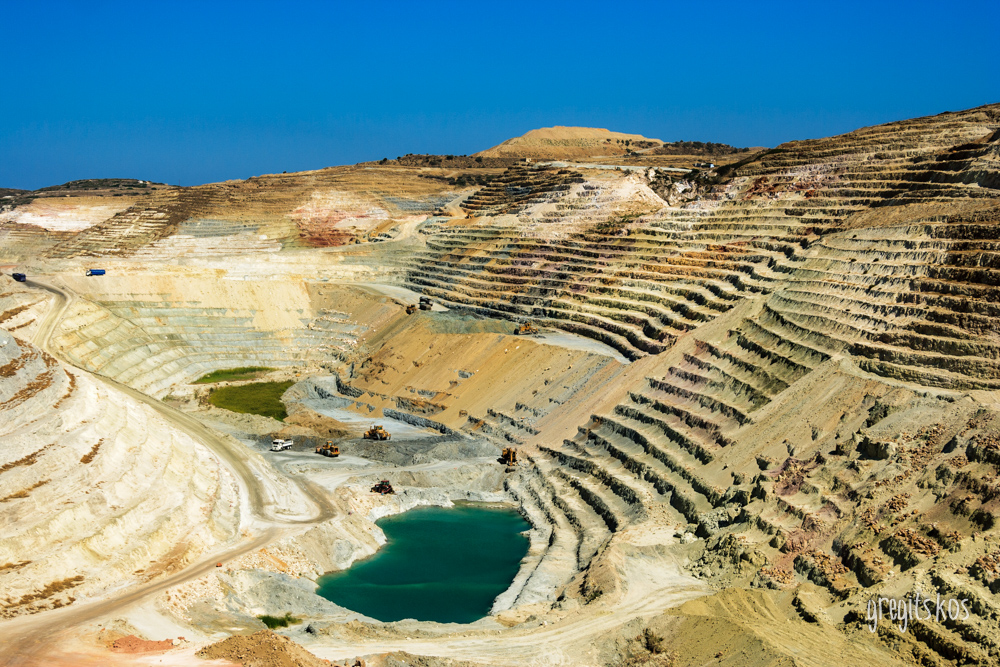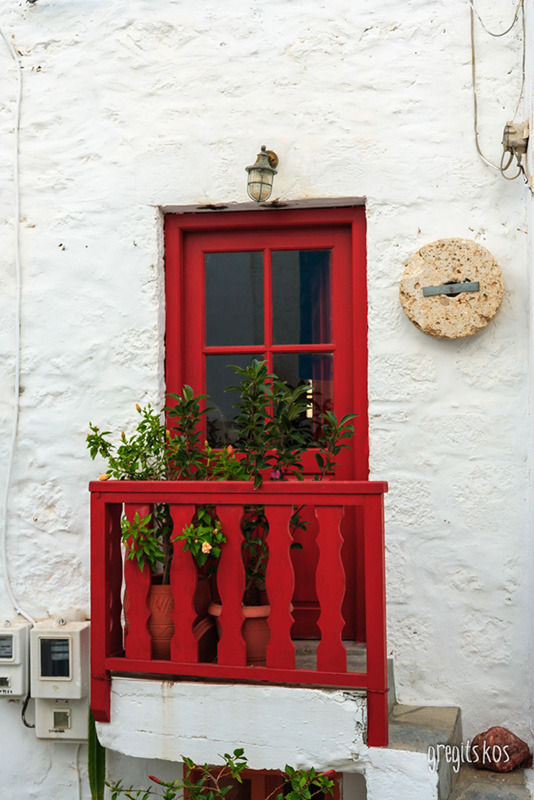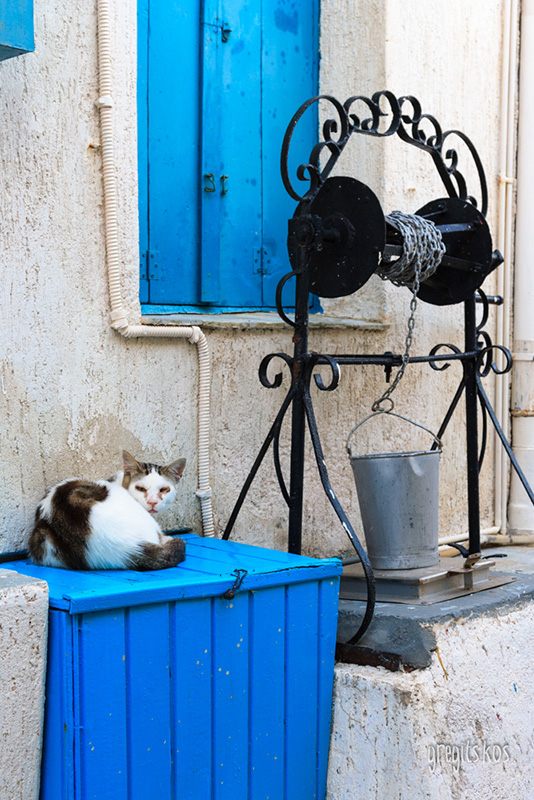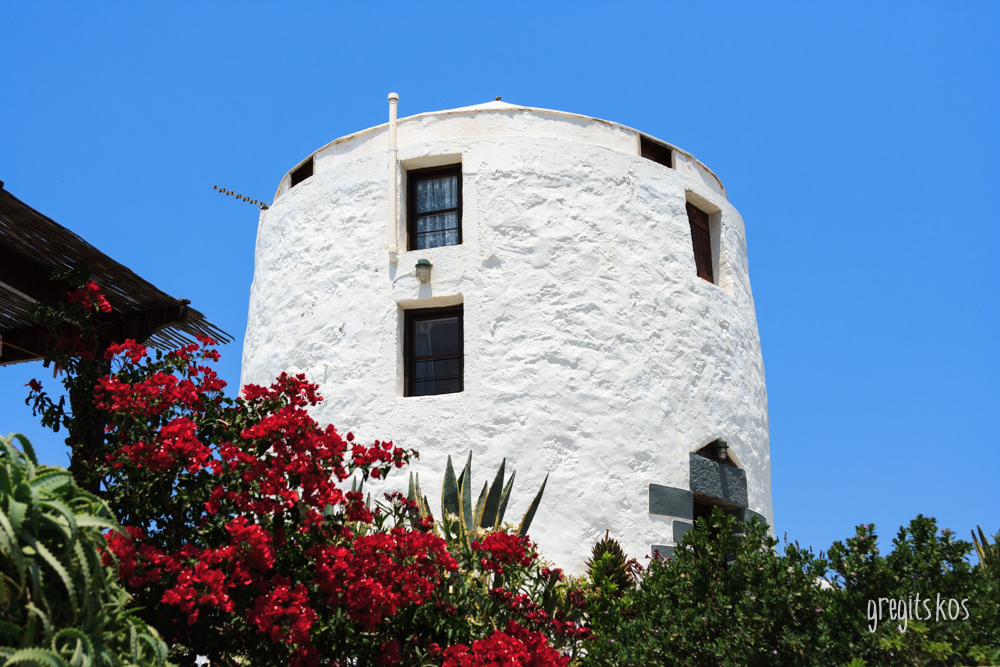
Lesvos of novelists and poets
The largest island in the eastern Aegean Sea in 7 days.
On July 29, we started our journey to Lesvos. We arrived in Mytilene, on Tuesday, around lunchtime, on the flight of 15.00, by Aegean from Thessaloniki. The trip lasted for just 35 minutes, and in 50 minutes time in total (counting in the boarding-landing) we were ready to pick up the cars that we had already booked and set off for the hotel. Having already arranged to stay in “Heliotrope Hotel”, it was very easy to reach the hotel’s reception in 5’ minutes time. So in less than an hour and a half from the moment of departure, we were already at the hotel, ready to enjoy our stay.
That same evening, and after a 20 minute’s beautiful drive south ways of the airport, we arrived at the small, picturesque bay of St. Hermogenes. The beach of Ag. Hermogenes, in a picturesque bay at the mouth of the Gulf of Gera, with the chapel of St. Hermogenes in a prominent spot, is small but fascinating, as the pines literally reach the coast. The only tavern, a little higher from the beach, under the trees, was perfect for a cold beer and the first dishes of local cuisine ready to be tested.
We start our trip from the eastern part of the town, named “Epano Skala”. Heading to the north, at a distance of 6 km far from Mytilene, we come up to the junction to “Moria” (a Roman aqueduct) and right after that “Afalonas” to the left and, a kilometer further along, to the right “Pamfila” and it’s beach “Skala”.
The first village one meets when entering the Municipality of “Thermi” as one comes from Mytilene, are “Pirgi”. A key feature of the region, the towers that still impress with their architectural grace. These were fortified country houses, rural estates where the affluent residents of Mytilene used to spend their holidays. Amid towers and trees “Panagia Trouloti” emerges, a great Byzantine church which, according to tradition, was built in 803, by Empress Irene the Athenian. The seat of the municipality is “Thermi”, which is in residential complex with the “Towers of Thermi” and welcomes a large number of visitors every year, due to its beaches but especially for the “St Raphael’s Monastery” that stands on the hill of “Karyes”.
Turning left, over the beach and the town on the hill “Karyes”, stands the monastery of Saint Raphael, which attracts thousands of pilgrims from around the world. In the two-storey church, with the impressive walls paintings, the relics of the saint martyrs Raphael, Nicholas and Irene are kept, found in a miraculous way after persistent believers dreams. In the monastery, there is a hostel to host pilgrims who choose to stay overnight.
After the pilgrimage, we go down the road to “Thermi” and then turn left to “Thermi Beach” and “Mistegna”. The area of “Thermi Beach” gathers many people every summer, visiting the swimming area “Canoni”, which is a few meters down the main road and has every kind of restaurant shops and entertainment choices, the picturesque harbor and traditional cafés or ”ouzeri” (shops that serve the local Greek product along with traditional dishes to accompany it called “mezedes”). Additionally, one can try the bathing facilities with hot thermal waters, reaching a temperature of 46.9 degrees Celsius. In the area lies the now deserted hotel “Sarlitza Pallas”.
We follow the coastal road and, after passing “Thermi”, the main road will lead us consecutively to “Mistegna” and “Scala Mystegnon”, “Nees Kydonies” and “ Scala Neon Kydonion” with their picturesque harbor.( * The word “Skala” is a common name used for a quarter of a village that is built by the sea, although its main part lays further away, usually on a hill above). They both have picturesque “Skales”, with many taverns and rooms to let. There you can taste special dishes like grilled octopus, which is the most delicious across the island. Shortly after “Skala Neon Kydonion” you reach “Xambelia beach” with the beach bar in the center of the beach. Free sun beds are offered to the visitors. The beach is sandy but when entering the sea you have to step on a pebble bed but after that sand covers the seabed. A little to the north there is a small creek, “Petalidi” (pebble beach-quite crowded on that day), where we arrived through a dangerous route as the narrow road that leads from “Skala Thermis” to Petalidi is open to the sea without any guardrails. Further to the north we meet the beach “Pedi”, a beautiful beach with clear waters.
The road continues parallel to the beach, while a small road to the east leads consecutively, first on the beach “Aspropotamos” and then to the preserved settlement of “Tsoukalades” in St. Stephanos, while opposite there are the small fishing isles “Tokmakia”. Moving on, at a distance of 6.5 km, we reach our next destination, the town “Mantamados” with strong elements of tradition and religious sentiment (within 38 km north of Mytilene) T
he village is widely known for the Archangel monastery and the great and important tradition in the art of pottery, as well as for its dairy products. The monastery stands at the end of the village. It is stone built, beautifully preserved and hosts dozens of visitors daily. It is the pilgrimage of Archangel, the monastery of the patron of the island, the Archangel Michael with the legendary, embossed icon. The story goes like that: in the 11th century, Saracen pirates, led by Sirchan invaded the old monastery of the Archangels and slaughtered all the monks except one. Novice monk Gabriel, the relics of who are now kept in the monastery, was in the sanctuary and climbed on the roof of the temple. The pirates followed him. It was then that a loud roar was heard and the roof turned miraculously into a stormy sea. Over the foaming waves a huge Soldier holding a firing sword, rushed against them. They fled in panic and later were found dead, bludgeoned by the Archangel. The monk, overwhelmed by the miracle and the appearance of the Archangel, as soon as he pulled himself together, wished to paint his face. Immediately, as if enlightened by the Archangel, took a sponge, which he used to reverently gather the blood of the monks in a bowl, toss with white soil and began to mold his face, as he had seen it on the roof of the temple. Indeed, after completing his face and because he run out of clay, he made the rest of the body in a child’s proportions, very small, something that can be seen only if you opened the canopy.
Tour guides say that the miracles performed by his grace are shocking. He notified and protected the area from the Saracens next raid, while the building of the present church in 1879, started and ended with a wonder. First, he was covering the foundation with dirt and carrying the tools of masons to the spot where the old church was, showing the place where he wanted to rebuild the new temple, and in the end he gave the money needed for completion. Every now and then, his eyes are filled with tears or his face sweats and Christians wipe it with cotton. He used to appear regularly during the Turkish occupation and the Turks respected him for his many wonders. He was wearing iron shoes and running everywhere to protect Christians. It is no coincidence that Mytilini was liberated from the Turks on November 8, 1912, the day of his feast.
Outside the monastery, in the courtyard of a church, next to the cemetery, the holy water of the Archangel flows for the pilgrims to drink and take with them. Next to the monastery there is a cafeteria with tables in the shade of trees and serving their special donuts with local honey. You should definitely try them!
In “Mantamados” there is also a restored mill – museum, where visitors can obtain information on how was the pressing of the olives done, with old presses and see pieces of factory equipment manufactured in Smyrna, early last century. In the area of the mill – museum there is an exhibition hosted every summer, from late July to late August. The “Pallesviaki Ceramics Exhibition”, which attracts thousands of visitors and in which, all ceramists of Lesvos exhibit their new creations. In the courtyard of the mill – museum there is an open-air amphitheater, where cultural events are hosted. We unfortunately we found it closed.
Before leaving the settlement, it’s worth trying the dairy products of “ Mantamados” mainly the yogurt, made the original way, in traditional clay pots called “gragoudes”. And of course, as we were told “Do not leave without trying their donuts”. We tried them at “Prinari”, next to the church, and we can certify that they were perfect.
On our way back, we stopped for a swim in the beach ‘Xambelia ” that we had met earlier on our way to “Mantamados”.
In the evening we looked for a tavern. We were starving and craving to taste the local speciatities! Our information led us to tavern “Antonis” that was relatively close to the area were the hotel was (Varia). We ascended the road to “Kayani” region (from the Turkish Cayo = rock) (or “Archangels”) from where the view to the harbor and throughout the city of Mytilene was amazing. The area is dominated by the impressive church of the Archangel who imitates the architectural style of “Agios Therapondas” in Mytilene, a masterpiece of architecture. Byzantine style with a woodcut iconostasis and a large full-length image of the Archangel made of wax and gum. Unfortunatelly, there was no vacancy in the tavern!!!! We should have booked first, they told us. It seems that the restaurant is famous for its food and the view (old shop nevertheless; They really need to renovate. On the other hand, maybe they don’t, since other things count more in a tavern).
In search of other tavernas, we took our second option, the “Rebetika” (2251040740), in “Epano Skala”. That’s the name for the eastern port of the city where there are plenty of taverns-ouzeri, all in a row by the sea. There we ate beans, sardines and anchovies, flowers and “stuffed puppies” (a fish dish), triangles (fish as well) and the tasty oil-cheese “saganaki” (baked cheese) . All very tasty!
A long but beautiful day ended, with a visit to the patisserie “Gardenia” in the center of the port street of Mytilene. It was worth it!!!
3rd DAY : MYTILINI- GULF OF GERA- PAPADOS-PLOMARI
Starting from Mytilene, we explored the southern “leg” between the two bays of the island of “Gera” and “Kalloni”. (Departure from the hotel at 12.00). We followed the main road to “Kalloni” and at the intersection we headed to “Plomari”. We passed close to the wetland of the River “Evergetoulas”. Although it was midsummer, some birds and enough flamingos could be spotted in the background.
We continued along the coast, and near “Pigadakia” we turned right (west) on the road that led inwards, leaving the sea behind us. The road, offering a panoramic view of the Gulf, led us to “Papados”, a village where we stopped to visit the wonderful Olive -Museum of “Archipelagos Company”, formerly owned by the grandfather of Odysseus Elytis. A worthy visit especially for the kids, that learned about the olive oil extraction process at that times and also got some information about Elytis in a tribute room there was there.
Charming streets, paved with granite (at least in the area around the mill) and traditional houses and restored mansions create an exceptional image.
Driving through the village and asking for the correct direction we should go to reach our next destination, we were led through the shaded by trees streets to the picturesque “Plomari”. Or rather its “Scala” which was just before the village. “Plomari” is famous for its beautiful and clean beaches. The most popular and largest beach is the sandy “Agios Isidoros”, located 2 km before the center of “Plomari”. Although we were informed otherwise, it was not well organized. There were pebbles at the entrance to the sea. We swam with masks watching the many fish that were gathering over the rocks at the right side of the beach.
A walk at the center and the harbor of “Plomari” completed our visit to the region. What’s worth visiting is the folklore museum, the cultural center, housed in a renovated soap factory and hosts a display on how soap was produced, and of course the “Ouzo Museum of distillery “Varvagiannis” at the entrance of the village on the left of the road. Of course the whole area around the winery smells ouzo !!! In the taverns of the harbor you can enjoy authentic flavors of the island, together with some of the famous local ouzo labels (Varvagiannis, PITSILADI, etc.). For our dinner we were told about the tavern “Ahivada” without eventually trying it.
We did not have the time but, they say that right next to “Melinda” (the nice beach west of “Plomari” with the characteristic 10 meters high rock above the beach), following a path, you can visit “Panagia” a chapel hidden in the slot of a rock, through which hot waters gush. For those who want to enjoy a quiet swim, the pebbled beach “Drota” in “Akrasi” would be an ideal destination. Another option is “Ammoudeli” beach, located 300 meters from the central square of Plomari”, westwards on the road to Melinda. On the beach there are two restaurants and a mini market. Famous and awarded with a blue flag is the long beach in “Tarti” east of “Plomari”.
On the way back, we chose to follow the coastal road that runs from” Perama” and “Evriaki”, around the Gulf of Gera. These areas are of touristic growth and as we noted they are picked by many visitors for their sandy, organized beaches. In the old, diserted, industrial buildings in “Perama”, at the port of “Gera” one can discern signs of their acne in the past: old tanneries, soap factories and mills in the former large industrial center. In “Perama” there is a ferry that connects it to the opposite side of the gulf.
In the afternoon, we strolled around the narrow alleys in Mytilini. Starting from “Varia” and heading towards the city center we admired the imposing mansions with their large gardens. Incredibly beautiful buildings, one next to another, not only in this region but also throughout the whole city add to the typical architecture of the town. Towers, houses with oriental elements (sachnisi), rich houses of the 19th century, with neoclassical and baroque elements and buildings of later times, built by wealthy merchants and industrialists, influenced by European architectural patterns with bold ornamentation.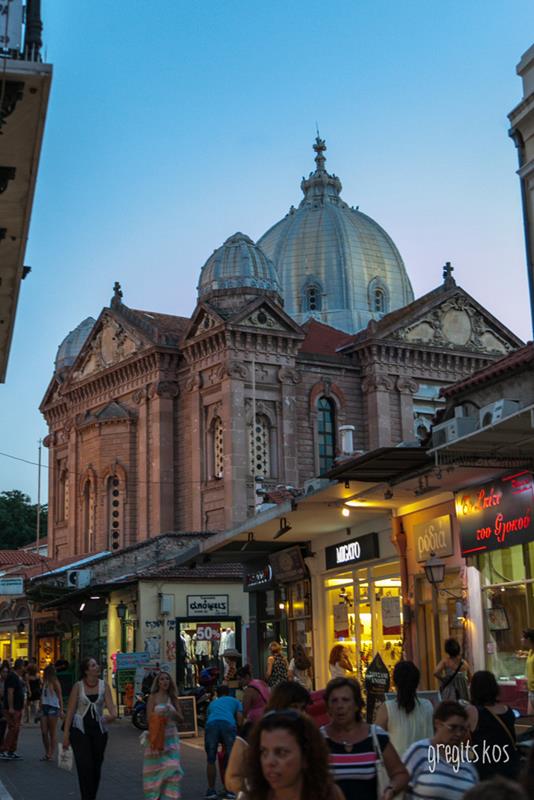
The beautiful street of “Ermou”, gathered the greatest bulk of shops of all kinds with the church of “St. Therapon” dominates each photo of the port of Mytilene. The walk to the waterfront, from the building of the Prefecture up to the Customs Office and the Statue of Liberty on the other end, gives us the opportunity to admire beautiful old and restored buildings. At that point, it’s worth going up the road, next to the castle, in the “Epano Skala” area, where there are magnificent buildings such as the Ministry of the Aegean and the Court House (old Ottoman high school). To the east of the harbor stands the famous castle of Mytilene and below the south side, after the grove, the beach “Tsamakia”. The city Castle impresses with its medieval color. It was built during Justinian times while changes were made during the Turkish occupation. Many underground tunnels and tank capacity of 4,000 square meters have survived the years. Part of it is used as a venue for cultural events during the summer months. Among the highlights is the Ancient Theatre in the wooded hill of “Agia Kyriaki”, whose construction dates back to the late Roman period. It is regarded as one of the biggest theaters of antiquity, with an average capacity of 15,000 people and excellent acoustics.
In the same area there are the old and new archaeological museums and the Traditional Lesbian House. But museums are best to be visited in the morning.
Our evening walk led us to “Martano” pizza and pasta restaurant. We fully recommend Martano!
4th DAY: MYTILINI-KALLONI-PETRA
The visit to the “Museum of Theophilos” (tel. 22510 41644/28501 -open 10.00 am-16.00pm, except Mondays) was the one that started our day because it was close to our hotel. The same morning, we regretfully departed from the hotel for our next destination. Over the next four days we would stay in “Petra”, on the northwest part of the island so we that we can explore the rest of island driving shorter distances. We covered the 80 kilometers in an hour’s time.
The village of “Kalloni” was on our way. “Kalloni”, with salt lakes and the wetlands full of birds, despite the late summer time, was buzzing with dozens of cars in motion parked randomly here and there. We were really repelled by this fact. We drove as far as “Kalloni’s Skala”, but we decided not to stop there either.
«Theofilos Hotel», our hotel in “Petra”, disappointed us, unlike with the village “Petra” itself which is beautiful and we were able to enjoy it after our protests to the hotelier. The problem was that when we booked the rooms through an internet site we were shown very different pictures of them. But when we got there we were led to rooms with old furniture, ripped towels and problematic bathrooms!!!!!.
After the frustration and since we realized that we had no choice being cheated in a high season with no vacancies, we decided not to spoil our mood. We had a swim on the beach of Petra (organized, with free sun beds) and in the evening after a small stroll in the narrow streets with the traditional shops we sat at the first restaurant we came by. It was a Grill house, “To steki”. Adequate food, without anything special though. For those who like cooked food, around the corner, on the first floor above the cafeteria there is a restaurant run by the women’s association, with homemade dishes that say they are very tasty, cooked with local products (tel. 2253041238-41309).
5th DAY : PETRA- ANAXOS- SIGRI- ERESOS
On Saturday night, a heavy storm broke out. In the morning, everything was wet and it was a little cloudy. It was the perfect chance to visit “Sigri” with the petrified forest. The western part of the island is very distinctive and totally different. Volcanic, barren, with wild beauty. Driving past “Skoutaros” and “Skalochori”, we continued towards “Vatousa” on a road meandering like a snake. The tourist guide mentioned that is one of the most beautiful mountain villages, with large mansions and remarkable public buildings, that declared the village a traditional settlement. We decided to make a stop on our way back but unfortunately we couldn’t make it.
We continued along the road westwards, passing past “Antissa” and turning right at the junction to the High Monastery and “Sigri”. The road, as in many other cases, was not well-marked and this made it difficult enough to find our way, having to stop and ask for directions whenever that was possible. So, since here in the wilderness we rarely met someone, we were mostly guessing the direction with the help from the map.
Finally, in the southwest of the monastery, 9 km far from “Sigri”, we arrived at the 20 million-years -old unique Petrified Forest (entrance fee: 2 euros). On a 286-acre landscaped park, in the area “ Bali Alonia”, we were informed about the way a volcanic eruption was the cause that an entire prehistoric forest was buried and petrified, maintaining the structure of the plant tissues in a perfect condition. Very impressive! Stunning in fact! The heat of the sun, however, was getting annoying. It was already noon when we started wandering in the forest (no real trees there, by the way). The landscape was bleak and barren. Some of our friends, after walking the main path, chose to cool off in the small cafeteria. Don’t miss the experience, no matter how tiring it may seem!
We left in search of the Museum of Natural History, which eventually was in “Sigri”. We admit that we did not expect to find a museum of these standards in a place like this!. The awesome presentation of the displays such as :rocks, fossils of all kinds, plants and animals, presentation of plant evolution and activity of volcanoes, interactive boards and simulators of earthquakes impressed us. There, we experienced the sense of shaking to the power of the six major earthquakes on the planet. We left excited.
As for “Sigri”, it is picturesque, with its castle (not open) and the beautiful sandy beach next to the road. Taverns and cafes offer what one needs.
Following once more the main road, in the opposite direction, we arrived at the junction of the monastery and this time headed south to “Eressos”. A winding road again. There is a shortcut though from the south (from “Sigri” straight to “Eressos”), 9 km long (dirt road). We were advised not to take it unless we were driving a 4X4 car!
Birthplace of Sappho and Theophrastus, “Eressos” and “Skala Eressou” 3 km to the south , is known for its beach. Black sand, a wide and very long beach. At the entrance to the common in the island pebble beach and the water was cooler than in the other beaches. The beach itself was organized but we were surprised that we had to pay for the umbrellas and sun loungers (6 euro per umbrella including two sun beds). The sea was nice indeed. On our walk along the beach, we saw several beach bars and many waterturtles in the water stream that crosses the beach at some point. To the east, many taverns with their tables on wooden platforms right on the beach sand were inviting at that time. Trusting a friend’s tip, we chose to eat at “Soulatso». We tried grilled octopus, mussels and tasty meat dishes and delicacies of the region. We stayed until late in the evening there, by the sea. We didn’t go back until eleven o’clock. It was an hour’s drive to reach “Petra”. In the darkness, as were driving down the hill, the castle of “Molivos” and the rock with the church of “Virgin Mary” in “Petra” were shining like golden crowns on the hills.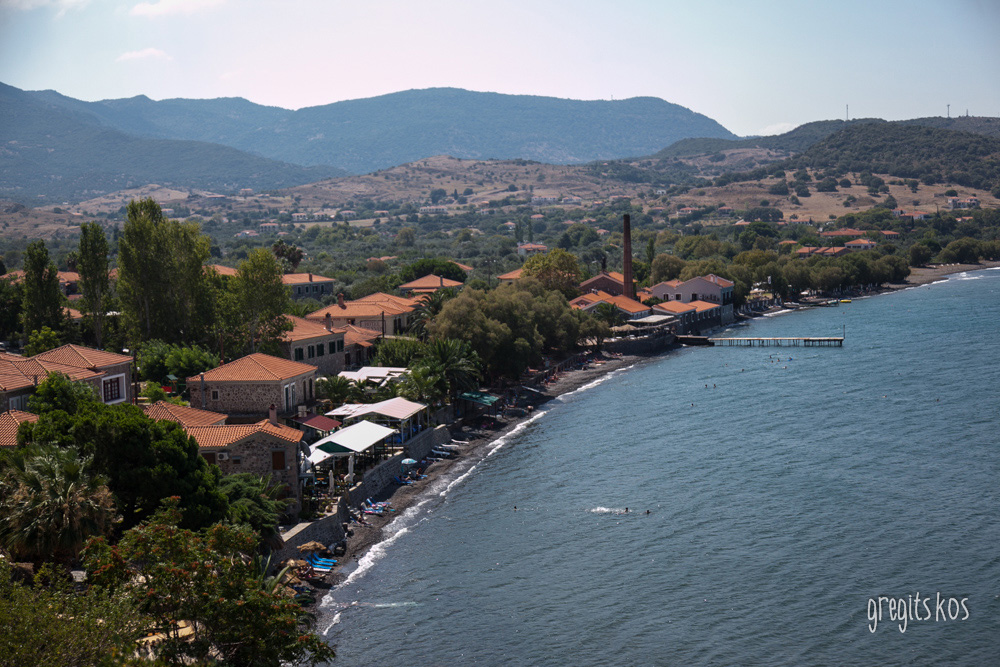
6th DAY : MOLYVOS – EFTALOU -PETRA
It was a morning to relax a little, after yesterday’s long day. But you have to get tired, to see things! Enjoying our coffee and some morning delicacies at the cafe ‘Briki’, the first on the harbor of Molyvos, was really what we all needed before the walk to the castle of Molyvos. The castle is offering the visitor a fantastic view of the city below, Petra and the Asia Minor coast (within walking distance to the north). Quite enjoyable was the swim in the sea in “Petra beach”, since in “Eftalou” (we had planned to visit it today) it was very windy since the wind was blowing from the north. “Yako Bar” offered us free sun loungers on our order.
Today, we decided not to use cars. Instead, we took the chance to wander through the narrow, cobbled streets of Petra (an important architectural monument is the mansion “Vareltzidena”, tel. 22530 41510) and climb the 114 steps to the monastery of “Panagia Glikofilousa”. After that, we headed to the coastal square, where they had organized an evening with traditional dances. There were many people everywhere so all the taverns were crowded. We had to find somewhere to have dinner. Our pick was an unlucky one, but we had a nice ice cream to our consolation!
Late at night, we decided to have a taste of the nightlife of Petra. The previous nights we were looking at the strong lights of the Night Club “OXY” at the tip of the peninsula that hides “Molyvos” from “Petra”. The decoration resembles the bow of a ship and gathers all the young population in the area who want to entertain with loud beat music. The view was just wonderful and the evening we spent very enjoyable.
The plans today included visiting the north part of Lesvos (“Skala Sykaminias” etc.) but since we had not had enough of “Molyvos”, we combined our visit there to swimming in the nearby beach of “Anaxos”. We skipped the hotel breakfast and replaced it with one in “Bazzar” in Molyvos (just before the left turn that leads to the harbor). We were attracted by the beautiful, shady terrace. A beautiful spot, indeed, but unfortunately we can’t say the same for the food and the service. The sandwiches were good, though.
Our walk through the winding, cobbled streets, among the magnificent stone mansions, under the foliage – shaded pergolas (called “Salkimia”) was a unique feeling. Dozens of little shops sell what usually might interest the visitors. We bought ceramics from the “Water and Soil”, coarse salt, and local oregano (the truth is that it was kindly offered to us by a shopkeeper who did not sell Lesbian oregano but gave us some of his own). The existence of a Municipal Art Gallery, a Library and an annex of the School of Fine Arts, testifies the important cultural life of the region. We were impressed by the well organized cultural events. Having planned a bunch of events, and even art workshops for children…
We visited the castle but we found it closed. It was a Monday! The truth is that we thought it’s summer and it should have been open. (tel. 71 803 22530). We walked around its outer wall perimeter, admiring the view from “Eftalou”, as far as “Sykaminia” and the coasts of Asia Minor across the channel.
We came backwards for a swim in Anaxos. A perfect beach which was the best of those we visited. Sandy and organized along its length, shaded by trees besides the umbrellas of the beach bars. We arrived at “Jalouse” where we enjoyed the sea and the shade until the afternoon, when we felt really hungry.
 |
 |
“Paradosiako”, is a traditional tavern (on the way to Anaxos- tel. 2253041058) and the place we wanted to eat at. It was proposed to us by a friend. After the ride we had on the train (Village Train tel. 22530 72 211) in the three villages, we set off from Petra, it took us to Anaxos- Petra- Molyvos- 1 hour. We were not lucky with the tavern. It was full and we ate at the “Reef”, a tavern on the beach of Petra by the sea. Very tasty and large food portions. Excellent service as well!
That was our last night! We got ready for departure , so that in the morning we would have time to have one last ride in Mytilene for the necessary shopping (oil cheese, sardines) and a coffee in the harbor before we go to the airport and deliver the cars (Lesvoscarrental, tel. 2251027825).
RESUME
The 7 days- holiday in Lesvos filled us with unique images never experienced before in another island. We will especially remember the diversity of the natural environment. Verdant mountains (olives, pines, sycamores and oaks), streams, numerous springs, volcanic rocks, hot springs everywhere, dozens of beaches, wetlands and rare variety of architectural forms that one meets here, compose an image that will remain unforgettable. The days were few to discover it more extensively as we could. I think that not even a fortnight is enough. We didn’t visit “Sykaminia” in the north, “Vatera” and “Polichnitos” in the south but also the beautiful, as they say, “Agiasos” in the central highlands of the island.
TIPS
Every summer, the Municipality of Mytilene organizes a series of cultural events entitled “Lesbian Summer”. Important artists participate and it’s nice to watch it.
During the first week of August, another feast takes place called: “Celebration of Ouzo” in which the local producers offer free ouzo!
Traditional houses and restored mansions in Mytilene









